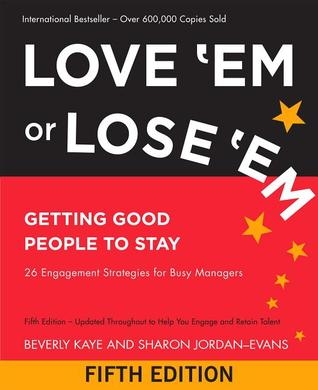Present-day professionals face challenges in sustaining mental health success because they must deal with elevated workplace pressure from their job commitments. Working extended hours against strict deadline requirements under continuous work stress points negatively affect employees’ physical health alongside their emotional state. Right approaches exist to support both mental health preservation and productivity maintenance. This article presents several tested methods to handle stress while preserving your mental health within a challenging work environment.
Prioritize Work-Life Balance
Working in a high-stress career requires proper work-life balance as a fundamental element for preserving mental health. The constant pressure of overworking results in symptoms that include burnout together with anxiety and depression. The prevention of excessive stress requires clearly defined limits which separate professional work from personal life. The practice of blocking work communications from your work computer after office hours helps build professional and personal time separation. Regular scheduled breaks throughout the workday enable mental rest to occur which helps prevent the development of exhaustion. Outside workplace environment people need to participate in pleasant recreational activities to obtain mental respite from professional challenges.
Practice Stress Management Techniques
Mental health strongly benefits from learning skills to manage work-related stress effectively. Deep breathing together with meditation practice serves to both minimize nervous system activation and lower stress markers in the body. Employees who practice mindfulness maintain their presence as well as concentration skills which decreases their anxiety about future uncertainties. Being physically active stands as an outstanding approach to control stress. Regular exercise produces endorphin reactions that create good moods while eliminating tension symptoms. The practice of journaling provides multiple benefits since it enables people to examine their emotions and trace the origins of their stress as well as create better methods for dealing with challenges. These techniques when included in daily lives will significantly improve total well-being levels.
Set Realistic Goals and Expectations
The combination of too many job duties which do not match reality creates both stress and a sense of frustration. Task success depends on dividing complete projects into smaller necessary steps which prevent overwhelming feelings. Individuals should divide their significant tasks into smaller milestones because it helps them approach the work in a more manageable way. Accomplishing work tasks according to significance and criticality helps personal time management efficiency. The prevention of burnout requires direct exchange of workload concerns between employees and both their managers and colleagues. Applying for deadline extensions and requesting task reassignment enables staff to keep producing work at a high level even when their mental health requires attention.
Develop Healthy Work Relationships
The environment of support at work can substantially improve the way we handle stress. Developing solid relationships at work helps employees create a team atmosphere that functions as their main emotional support system. Members of connected work teams become more comfortable with sharing their work challenges and obtaining support at appropriate times. A workplace atmosphere based on positivity supports free communication between employees which minimizes both their isolation and stress. Workplace activities coupled with social events help develop better relationships between colleagues that build an inviting work environment.
Maintain a Healthy Lifestyle
Proper mental wellness depends on maintaining a healthy diet together with sufficient hydration and sufficient rest. Eating a nutritious diet consumes energy into body systems and brain processes which results in better focus together with increased energy levels. The brain as well as mood stability need at least seven to eight hours of uninterrupted sleep each night to function optimally. Insufficient rest leads to worse stress manifestations while it diminishes work efficiency. Hydration maintenance all day increases performance levels along with concentration abilities while stopping feelings of tiredness along with sluggishness. A combination of appropriate lifestyle decisions helps employees develop resistance against stress factors at work.
Learn to Say No
The task load becomes too extensive when employees accept too many responsibilities because this creates mental health problems. Learning how to decline tasks when needed forms an essential life skill to stay away from work-related stress overload. People need to evaluate their present workload before taking on new tasks since this assessment determines workability of additional duties. The ability to reject excessive work demands practices strength because it leads to better care of oneself. To allow staff members focus on essential duties it is beneficial for employers to delegate responsibilities when possible.
Seek Professional Support When Needed
Professionals may reach their capacity to manage stress and anxiety alone. Getting professional assistance about mental health problems stands as a smart decision for better mental well-being instead of indicating weakness. Acquiring therapy Toronto or counseling lets individuals acquire essential knowledge about behavioral strategies and methods to address workplace stress. Most businesses maintain Employee Assistance Programs (EAPs) which provide members with secure mental health guidance. Good perspective and motivation can come from speaking with a trusted mentor and colleague. Professionally seeking assistance during times of need allows mental health challenges to receive early attention before they become more serious.
Engage in Regular Self-Care
Activities related to self-care enable you to achieve and preserve mental and emotional equilibrium so you can better handle work-related stress. Walking outside brings both outdoor air and different views to rest the brain. Exercising mindfulness together with yoga practice helps decrease anxiety while promoting relaxation. The practice of music listening combined with reading and artistic activities such as painting and writing allows workers to escape mentally from workplace stress. The combination of prioritized self-care boosts personal health and develops strength against stress.
Stay Organized and Manage Time Effectively
Disorder creates frustration which generates additional stress levels. Success in work requires both effective time administration and responsible organizational systems. Digital tools alongside planners enable employees to maintain organization which prevents them from having to rush their work at the last moment. The prevention of work overload becomes possible through proper distribution of essential work tasks combined with step-by-step project planning. The arrangement of an uncluttered workspace leads to improved efficiency while decreasing pressure at work.
Adopt a Positive Mindset
A workplace environment improves when individuals adopt an optimistic mindset to manage their job-related stress. The practice of finding solutions allows people to adopt an active mindset because they shift away from problem-oriented thinking. Job satisfaction along with motivation grows through expressing appreciation to yourself for your accomplishments and progress. A healthy mental state develops when people isolate themselves from workplace negativity and keep positive influences within their reach. Optimism combined with resilience enables professionals to tackle their challenges confidently so they handle them with ease.




















